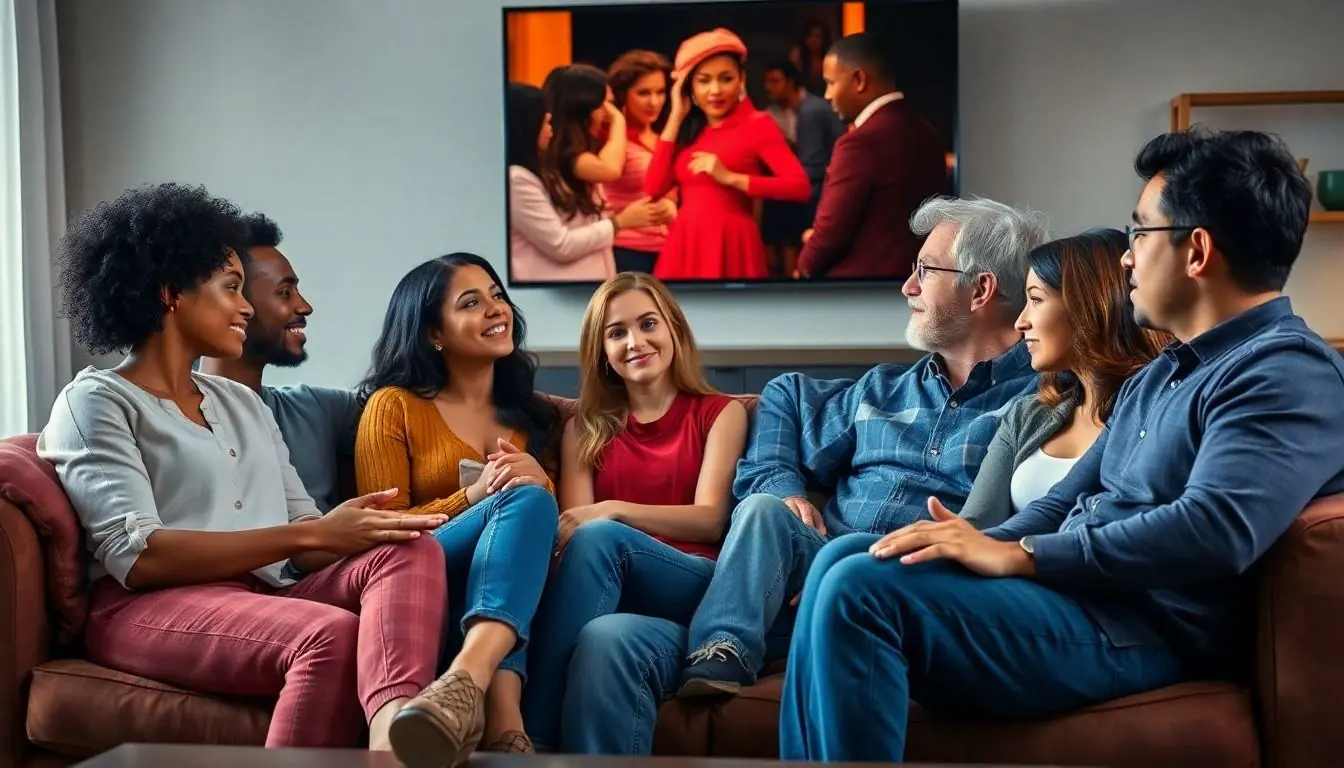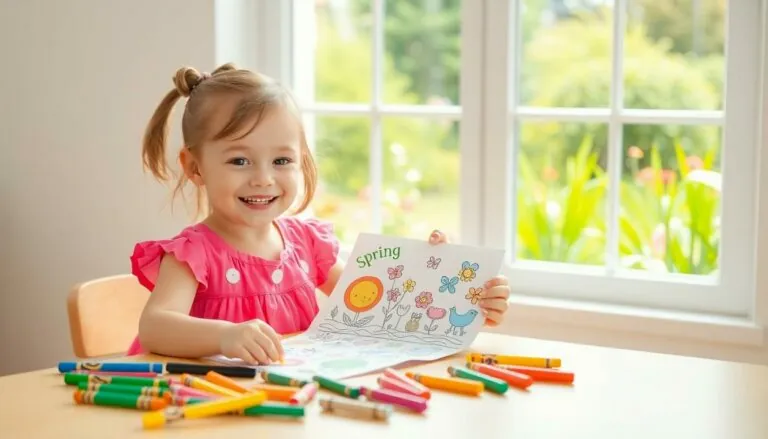Table of Contents
ToggleIn a world where binge-watching has become a national pastime, some shows push the envelope so far they practically need a safety net. “Too Much for TV” dives into those audacious programs that make viewers gasp, laugh, and sometimes question their life choices. From outrageous plot twists to jaw-dropping moments, these series redefine what it means to be entertaining.
Overview of “Too Much for TV”
The concept of “Too Much for TV” encompasses a range of television shows that push the boundaries of conventional storytelling. These programs often engage viewers with unexpected narratives and unconventional formats. They frequently explore themes that provoke strong reactions and stimulate discussions among audiences.
A pivotal aspect of “Too Much for TV” is its appeal to diverse viewers. Programs within this category attract attention by weaving humor with darker, more serious themes. Shows challenge societal norms, often addressing taboo topics that traditional media typically avoids.
Innovative storytelling techniques characterize many of these series. They employ non-linear narratives, unreliable narrators, and immersive environments that enhance viewer engagement. Such approaches create a compelling viewing experience, drawing audiences into the intricate worlds of the characters.
Additionally, these shows often incorporate a blend of various genres. Mixing elements from drama, comedy, and even horror captivates a wide array of viewers. For instance, some series brilliantly juxtapose laugh-out-loud moments with poignant, thought-provoking scenes, maintaining a delicate balance.
In terms of viewer impact, “Too Much for TV” often evokes strong emotional responses. Audiences experience everything from exhilaration to discomfort, reflecting the complexities of real-life situations. This emotional depth fosters conversations that extend beyond the screen, engaging fans on social media and in everyday discussions.
Overall, “Too Much for TV” exemplifies a significant shift in television programming. It highlights the evolution of audience preferences and the industry’s response to these changing dynamics. These bold, groundbreaking shows have redefined entertainment, leaving a lasting impression on the television landscape.
Key Themes Explored
The article examines several prominent themes that arise in shows deemed “Too Much for TV.” These themes resonate with diverse audiences and challenge conventional television norms.
Societal Norms and Expectations
Societal norms and expectations frequently shape the narratives presented in bold TV shows. These programs often highlight issues like race, sexuality, and mental health, prompting critical discussions about cultural sensitivities. Challenging the status quo, many series spark debates and encourage viewers to reconsider long-standing perceptions. Creators use characters and story arcs to reflect societal challenges, revealing underlying truths that resonate powerfully with audiences. Such explorations foster empathy and understanding, resulting in a more engaged viewer base. Ultimately, challenging societal norms creates an opportunity for dialogue and growth among viewers.
The Concept of Censorship
The concept of censorship plays a significant role in the production and reception of audacious television shows. Many creators navigate the delicate balance of artistic expression and societal boundaries. Themes that provoke strong reactions often face scrutiny from networks and regulatory bodies. By pushing the envelope, these series expose the limitations of traditional television while igniting conversations about what content should be deemed acceptable. Addressing controversial topics encourages viewers to confront uncomfortable realities, further enhancing the impact of the program. In this context, censorship not only influences storytelling but also shapes audience expectations and engagement.
Reception and Critiques
“Too Much for TV” elicits strong reactions from audiences and critics alike, highlighting its impact on contemporary television.
Audience Reactions
Viewers often respond passionately to surprising narratives and unconventional formats. Shocked and intrigued, many audiences find themselves discussing episodes long after they air. Reactions range from enthusiastic praise to heated debates about the themes addressed. Social media platforms buzz with commentary, amplifying the show’s influence. Engaging with complex topics like race and mental health, these shows resonate deeply, prompting introspection and dialogue among diverse audiences.
Critic Reviews
Critics provide insightful observations on the audacity and creativity these programs embody. Many reviews commend the bold storytelling choices and innovative techniques employed. However, some critics express concerns about potential desensitization from extreme content. Reviews frequently highlight the balance between artistic expression and viewer comfort. Overall, critical reception reflects the transformative nature of “Too Much for TV,” encouraging broader discussions within the entertainment landscape.
Cultural Impact
“Too Much for TV” reshapes cultural landscapes, influencing viewer perceptions and societal norms. Audiences engage with challenging themes, leading to deeper reflections on personal and collective experiences. These shows confront issues like race and mental health, fostering open dialogue about sensitivity and understanding.
Innovative narratives draw attention, as creators explore non-linear formats and unreliable narrators. Techniques such as genre blending captivate diverse viewers, merging comedy with darker elements. Emotional responses vary widely, with some viewers exhilarated and others feeling discomfort. This spectrum of reactions evokes conversations that transcend traditional media boundaries.
Social media platforms amplify discussions sparked by shocking plot twists. Audience insights often emerge online, creating a living dialogue that extends the impact of these programs. Critics regularly emphasize the audacity displayed in these series, acknowledging both the creativity involved and the risks of desensitization. This duality in reception highlights a cultural tension surrounding extreme content.
Key themes identified in bold shows encourage critical discourse. As societal expectations shift, these programs reflect evolving viewpoints and push back against dated norms. Audiences increasingly seek authenticity and relatability, making bold storytelling resonate on a personal level. The blend of humor and serious topics speaks directly to contemporary concerns, aligning entertainment with cultural conversation.
Overall, “Too Much for TV” contributes significantly to the conversation about the future of television. By challenging boundaries and inviting scrutiny, these shows establish a new era of storytelling. Viewer engagement now goes beyond passive consumption, marking a profound cultural shift in how society interacts with media.
Future of “Too Much for TV”
Emerging trends in television hint at a continued evolution of “Too Much for TV.” Audiences increasingly demand more audacious content, reflecting their shifting preferences. Networks recognize the potential for ratings and engagement, with shows that push boundaries becoming more prominent.
Innovative formats are likely to gain traction, enhancing viewer experiences. Non-linear storytelling techniques and hybrid genres will dominate as creators seek to captivate diverse demographics. These approaches not only engage viewers but also provoke thought and discussion around complex issues.
Conversations about societal norms will remain at the forefront of programming. As diverse topics are explored, including mental health and sexuality, shows can stimulate critical dialogue. Such themes resonate with audiences, encouraging connections that extend beyond the screen.
Critics will continue to assess the impact of these audacious narratives. Feedback can influence how networks develop future content, ensuring that creators remain responsive to viewer reactions. Ratings and social media interactions will play pivotal roles in shaping the industry’s trajectory.
Planned expansions into streaming platforms signify a new distribution landscape. With the digital sphere becoming an integral part of media consumption, access to eclectic shows will broaden. This accessibility fosters a more inclusive environment, allowing niche audiences to thrive.
Predictions about viewer engagement focus on interactivity and community-building. Audiences may participate in live discussions or influence storylines, enhancing their connection to the content. Such initiatives will likely redefine viewer roles, shifting from passive consumption to active participation.
Overall, the future of “Too Much for TV” signifies a transformative phase for television, where creativity and bold storytelling redefine the landscape.
Conclusion
The landscape of television continues to evolve as shows push boundaries and challenge conventional storytelling. Audiences are drawn to the audacity of these programs that spark discussions and provoke thought. As creators experiment with innovative formats and tackle complex themes, the engagement between viewers and content deepens.
The cultural impact of these narratives reshapes societal norms and encourages critical dialogue. As the demand for bold storytelling grows, networks are likely to adapt by embracing more unconventional content. This transformation not only enhances viewer experiences but also fosters a community where audiences actively participate in shaping the future of television.








